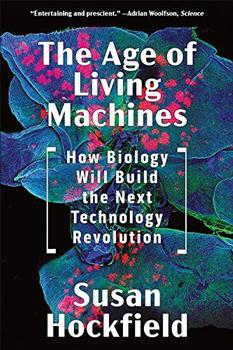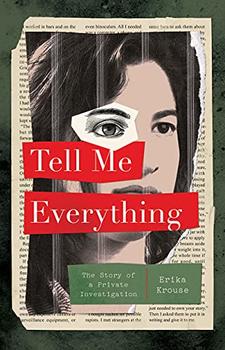Summary | Excerpt | Reviews | Beyond the Book | Read-Alikes | Genres & Themes | Author Bio

How Biology Will Build the Next Technology Revolution
by Susan HockfieldThis article relates to The Age of Living Machines
In The Age of Living Machines, Susan Hockfield tells readers about the work of Angela Belcher, a chemist and bioengineer who found a way to make affordable, clean and natural renewable energy. Belcher and her colleagues did this by harnessing the power of viruses to make electric circuits that were then turned into high-powered batteries. Yet in 1999, when Belcher first submitted grant proposals to fund what would become a breakthrough discovery, reviewers called the idea insane, denying the request. Belcher's story is not uncommon in that securing funds is a huge obstacle in research.
The sources and motivations for STEM (Science, Technology, Engineering and Mathematics) funding have evolved throughout history. In the past, funding was primarily driven by private patrons. For example, in 1576, King Frederick II gave Danish astronomer Tycho Brahe an estate, which Brahe used to build a research institute called Uraniborg, named after Urania, the Greek muse of astronomy. Uraniborg was a three-story observatory built on the island of Ven (off the coast of modern day Sweden), and Brahe invented and modified new instruments to measure and map celestial bodies while working there, including variations on sextants and quadrants.
As the landscape shifted in the late 1600s and 1700s due to the scientific revolution and the enlightenment, scientific academies and organizations began driving the quest for knowledge rather than individuals. Because of this, new types of funding surfaced and countries began to back up the patronage system with funds. In fact, from 1660 to 1793, approximately 70 scientific academies and societies were formed. Many of the academies were founded by countries in collaboration with advisers, such as German philosopher Gottfried Wilhelm Leibniz. Through such collaborations, technologies such as the telescope, barometer, thermometer and microscope were developed, which gave scientists ways to make observations, collect data and conduct experiments. Without this state-funded access to education and resources for research, revelations such as British physician Edward Jenner's smallpox vaccine and Anders Celsius and Daniel Gabriel Fahrenheit's temperature measurement systems would not have been created.
The late 19th and 20th centuries saw the founding of autonomous research councils, like the Social Science Research Council and the National Academies of Science, Engineering and Medicine (both American institutions) to pursue non-government related science. Still, massive projects for specific bureaucratic interests—such as the Manhattan Project (1942-1946)—continued to be federally funded.
In the last few decades, researchers and those financing them have striven towards a new level of transparency. Data libraries and archives are more common, as are open-access mandates which require researchers to make their work available for free. These mandates have been adopted by over 550 universities, institutes and funding organizations worldwide since 2015, including Harvard and MIT. Research is funded both privately and federally, through a mixture of governments, public foundations, businesses, crowdfunds, institutes, donations and universities.
Ideally, funding for science should be widespread and multi-faceted, as science arguably benefits all of us. But federal funding for science is dwindling in the United States. A report by the executive director of the Duke University School of Law Stephen A. Merrill found that federal investments in research and development have scaled back to less than 1% of the U.S. GDP. The American Association for the Advancement of Science found that funding for projects in some STEM fields has fallen by over half from 1970 to 2017. Although some may think that the solution to contemporary funding problems is to bulk up private funds in response to federal cuts, these sources of funding are not interchangeable. Private funding generally focuses on marketplace products, while federal funding focuses on early research.
Most Americans know that when funding is scarce, innovation and progress are stifled. Pew Research reports that nearly 80% of adults say that "science has made life easier for most people," positively impacting health care, food and the environment. Of these respondents, almost all believe that federal investments in STEM pay off in the long run and are "essential for progress." While researchers try to do the best they can with the resources that are available, those who see the value in this work can choose to support government representatives who share this ethos and advocate for policies that recognize the import of scientific study.
Filed under Medicine, Science and Tech
![]() This "beyond the book article" relates to The Age of Living Machines. It originally ran in May 2019 and has been updated for the
May 2020 paperback edition.
Go to magazine.
This "beyond the book article" relates to The Age of Living Machines. It originally ran in May 2019 and has been updated for the
May 2020 paperback edition.
Go to magazine.




Only when we are no longer afraid do we begin to live
Click Here to find out who said this, as well as discovering other famous literary quotes!
Your guide toexceptional books
BookBrowse seeks out and recommends the best in contemporary fiction and nonfiction—books that not only engage and entertain but also deepen our understanding of ourselves and the world around us.